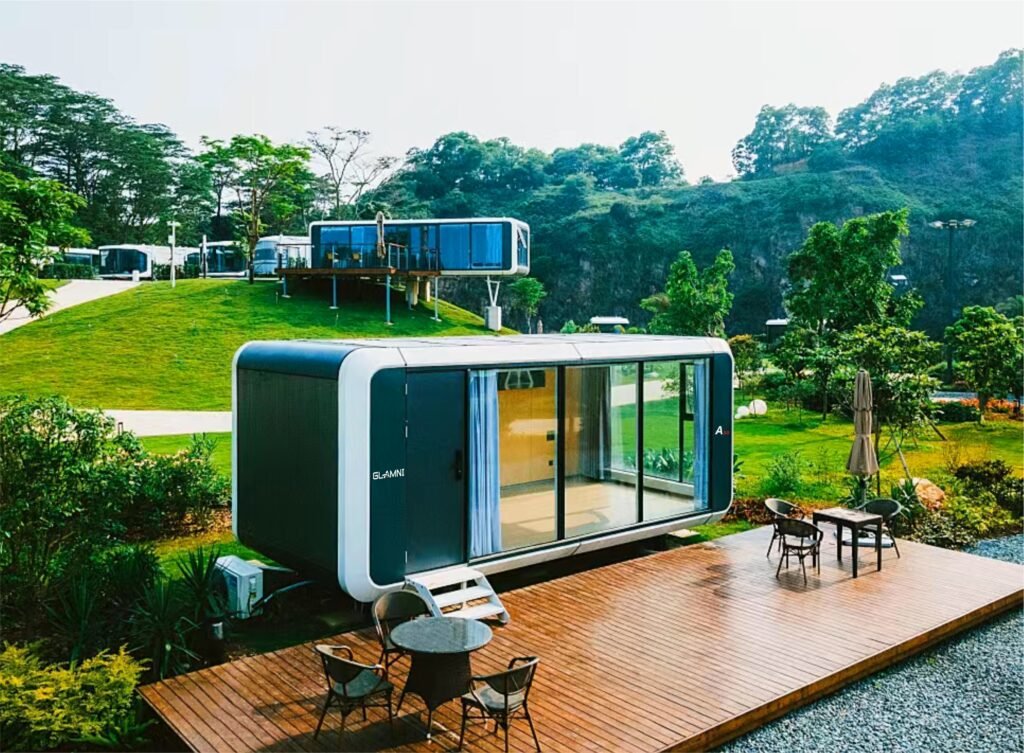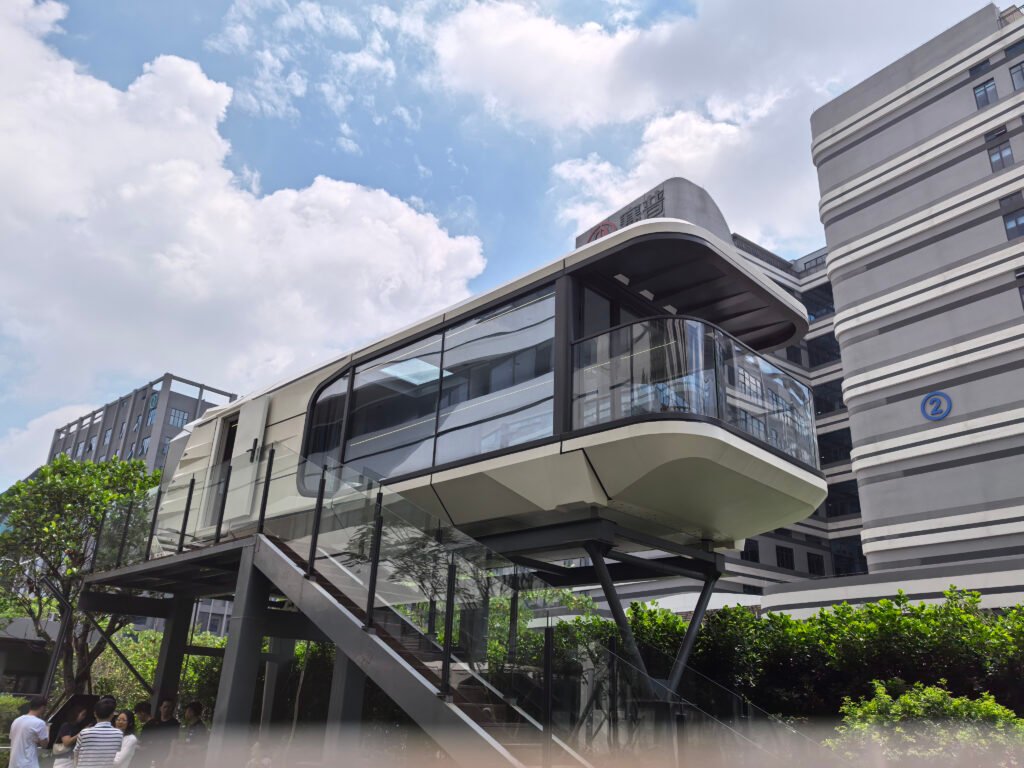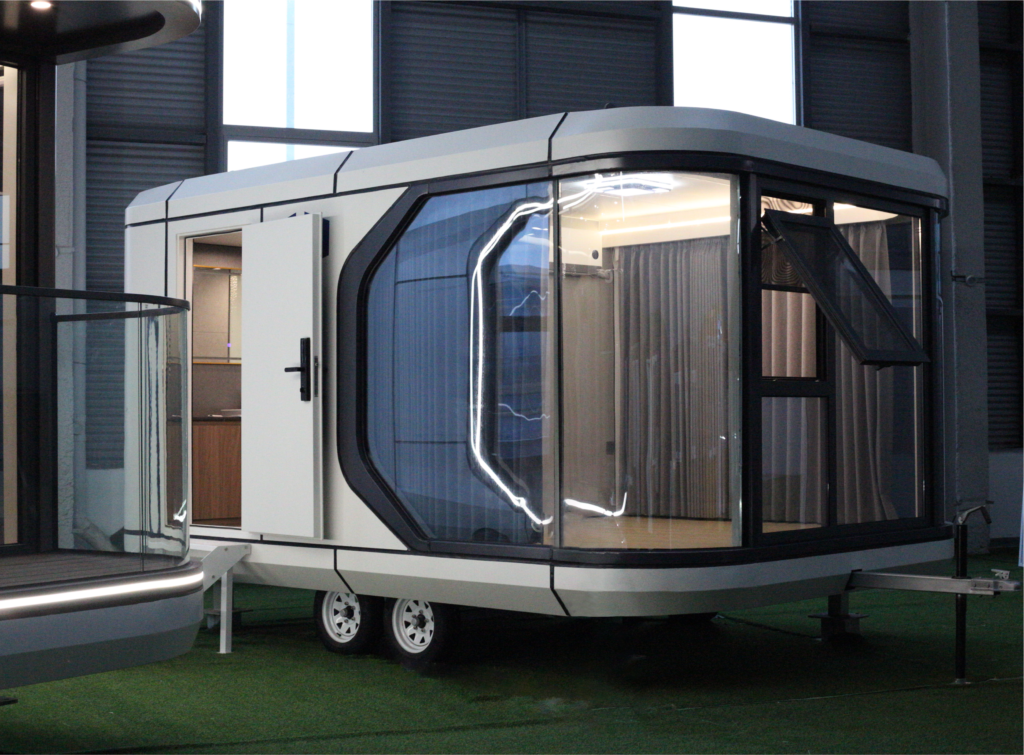The investment you’ll be making in a well-built capsule house will pay you back for years to come and will serve as your one-way ticket away from costly repairs, leaks and endless setup problems.
From where we’re standing, you have two choices:
To stick with your current mindset and don’t ask questions and hope for the best. Those are the famous last words everyone has heard.
Or you can ask basic, important questions from your supplier and get a capsule house that suits you and your needs.
Questions like what the price includes and what costs extra, requesting a live video tour or a visit to a nearby project, or how the climate will affect its performance. More importantly, asking about the warranty and the after-sales support you will receive. All these matter a lot.
In this article you will get a detailed buyers questions checklist for capsule houses. The goal of this checklist is to give you confidence in buying your capsule house.

Buying basics
The first and foremost question is: what’s included in the price and what’s extra. As the quoted price usually includes the complete prefab structure. That means the insulated metal frame, walls and roof panels, double- or triple-glazed tempered windows, doors, electrical wiring, plumbing stub-outs and standard equipment. For example, a standard model of Glamni’s house comes with a Gree AC unit and a heater. Remember that interior finishes and some extras (solar panels or special lighting) are not included in the standard package. If your selected standard model does not include something you want (refrigerator or stove), you can request them but this will add to the cost.
Another basic question is lead time from deposit to delivery. Prefab capsule houses typically have a fairly short production schedule. Normally, companies give a delivery time of about 1–2 months after receiving your deposit. This covers building the modules and packaging them for shipment. During peak demand or with custom options, it can take a bit longer. So, it’s best to ask the supplier for an estimated delivery date and what triggers production.
Here comes the most basic and important question: Can I see a live video tour or a nearby project? Many experts recommend or consider it a common part to tour a demo unit or watch a video walkthrough before buying. Ask the seller if they have a model you can visit or if they can provide a live online tour. For example, some prefab builders offer video tours of their display cabins or a project nearby. Seeing the actual finishes and asking questions in person can reveal details that brochures don’t show.
Comfort in real weather
Many of you know that capsule houses are built with insulation and HVAC systems to handle real-world climates. Start by asking about insulation and climate control. If i talk about Glamni’s capsules; they use thick polyurethane panels (about 100mm) in the walls and roof to keep the interior comfortable. We also use low-E insulated glass (6+18+6 mm) on windows to reduce heat transfer. This means the interior will stay cooler in summer and warmer in winter.

You’ll want to know the R-value or U-value of the walls for your specific climate.
- Summer and winter performance: Check if your preferred capsule house is designed for year-round use. Must ask for test data or customer feedback from climates like yours. You may need additional insulation, upgraded HVAC or even a fireplace, according to your chosen area.
- Noise level near roads or busy sites: Capsule houses are usually quieter than uninsulated structures because of the heavy materials. However, if you will place it by a highway or loud campsite, confirm how well it blocks sound. Look at the window and door specifications (double- or triple-glazing) and quality seals, as they will help. Also, you may want to visit a finished capsule at night to judge noise if you have concerns.
- AC and heating are standard or optional: Some companies include basic heating/cooling in the base package and others do not. In your discussions, confirm are both heating and cooling guaranteed or are they add-ons?
Waterproof and moisture
Capsule houses must be waterproof and resist humidity. Here are key questions about moisture management:
Roof design that avoids pooling in heavy rain:
Question out how the roof is pitched and built. A well-designed capsule usually has a slight arch or slope so water runs off, not puddles. Confirm that the roof has seals or flashing to prevent leaks at edges.
Door and window sealing method:
Question about the seals around doors and windows. Quality rubber gaskets or multi-point locking seals should be used. Our capsule houses use high-grade aluminum frames and have an “intelligent access control system” for doors and windows that have double or triple tempered glass.
Tip: Do a visual check of the capsule house’s real photos or videos to see if edge gaps are covered.
Plan to prevent condensation and mold:
Moisture control inside the capsule house is much needed. So, asking if there is a ventilation or dehumidifying system is very important. Prefer a capsule house that includes a fresh air system along with AC. This way the unit brings in filtered outside air, which helps prevent stale air and condensation. Also, make sure there are enough dehumidifiers or vents. More importantly, choose building materials (paints, insulation) for your capsule that resist mold.
Safety and durability
Making sure your capsule house is safe to live in should be at the top of your priority list:
- Tempered or laminated windows and a smoke alarm: Safety glazing is vital. At the time of buying, verify that local safety regulations are met (e.g., tempered glass near doors). Also ask if a smoke detector or fire alarm comes with the model. As it’s wise to have at least one smoke detector in the living area or ceiling for fire safety.
- Wind and snow ratings: The capsule’s structure should handle local weather. Ask for the specific wind rating (in km/h or mph) from your supplier and compare it with your area. If you’re in a snowy region, ask if the roof is tested for your snow load. You can say “I need a capsule house that can handle X cm of snow.” The builder should know or offer reinforcement. Mention also seismic zones if needed.
Fact: Even our standard model (G30) is rated to 12th-grade typhoon level (roughly 208-249 km/h winds).

- No. of times it can be lifted or moved: We all know that the big advantage of capsules is they are built to move. But you should also know how often it can be relocated. Normally, prefab units can usually be lifted by crane several times (delivery, installation, maybe a move later). But for confirmation check the manual: sometimes companies specify a maximum number of lifts (e.g., 3-5 times) before more maintenance is needed. You should use proper rigging points (often the corner fittings or cradle spots) as the manufacturer directs.
Delivery and installation
The capsule ships as one big module, not many boxes. Small units ship on a single container/flat rack. Larger models may ship on multiple flat racks or more containers. So, confirm the exact crate or container count for your model because some bigger units might break into two pieces for shipping.
Typically you need a large truck (flatbed or tilt-bed) to receive the capsule and a crane to lift it into place. We recommend using a crane of at least 25 tons capacity to offload and position the capsule safely. The installation itself is usually quick. Normally, a few hours for one capsule since it is already fully assembled. However, plan 1–3 days for site prep, crane work, and making sure it is plumb.
Must ask what kind of base options (screw piles, blocks, etc.) you need. Common choices are concrete piers or blocks, adjustable pedestals, or helical screw piles. This is best to discuss with your builder or a local contractor for foundation base. Whichever option, make sure it’s strong and level. Sometimes, sellers might allow different foundation methods, so choose one that fits your site’s soil and permits.
Utilities and compatibility
This is important that your capsule house integrates smoothly with your utilities. See this checklist:
- Electrical voltage and plug type: Capsule houses usually come wired for a specific voltage and plugs. Ask upfront these questions: “What voltage system will the capsule have, or what plug outlets come installed?” In many cases, builders can wire the unit to match local standards and even install a breaker panel. If you are importing from abroad, ensure you provide this info so the unit isn’t built with a mismatched electrical system.
- Plumbing plan and water heating options: Review how water and sewage connect. Normally, they come with indoor plumbing (toilet, sink, shower) plumbed to stub-outs. Confirm what kind of water heater: likely electric or gas on demand and ensure the capacity fits your needs. Ask how to tie into local water supply and drainage. You will typically connect it to your water lines and either a septic system or sewer. Also verify where the intake and drain hookups are located, as this affects site prep.
- Off-grid options: Discuss whether the base model can be built off-grid, and what additional packages are available. If off-grid use is required, make sure the electrical system has space or support for the batteries/inverters and that the roof can hold the panels. For water, some buyers add tanks or filters. Many prefab homes can include rooftop solar panels, battery banks, and rainwater collection tanks.

Warranty and support
Finally, understand what guarantees and help you’ll get after purchase:
Typically, the warranty covers the structure (frame), walls, and installed equipment. Clarify if that covers interior items like the air conditioner, water heater and any appliances or if those have separate terms. It’s common for manufacturers to give longer on-frame warranties (e.g. 5-10 years) in some cases, but you need to confirm. Get written details: for example, “One-year manufacturer warranty on major systems and the structure.”
You’ll also have to know how quickly the company responds if something breaks. A good seller should promise a response within a few days (or even hours for emergencies). Check if they have local service agents or partnerships for parts.
Also ask if they will assign a sales rep or project manager to you after the deal closes. This person would handle any questions or issues during shipping and installation, and coordinate warranties.
Conclusion
Capsule houses combine clever design with off-site construction, but a smart buyer will dig into the details. As, the good purchase starts with clear questions. By checking what’s included in the base price (and what’s extra), understanding climate performance and noise insulation, and reviewing other details, you will cover the essentials.
Contact Glamni’s team with your list of questions about capsule houses and ask for a detailed quote. With all the facts in hand, you’ll confidently step into your new capsule house project.


